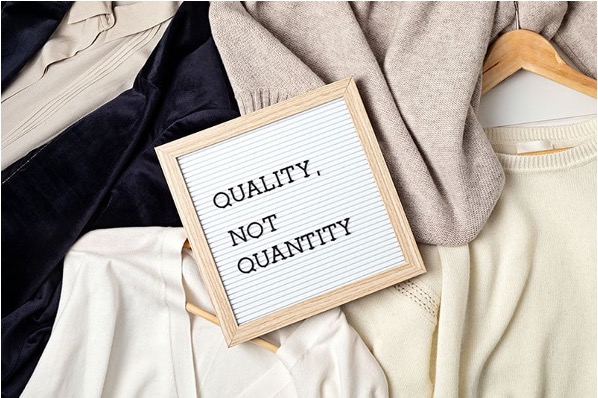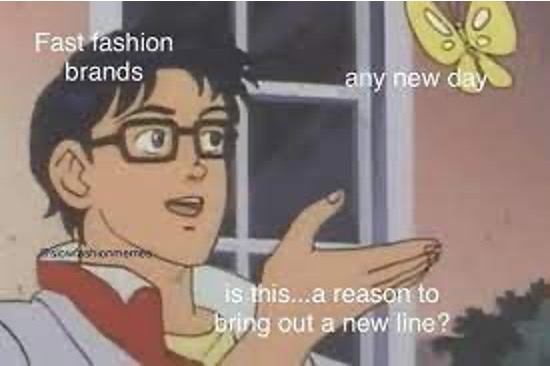Our PR Director, Michelle Smytheman, is passionate about helping emerging professionals in the communications industry and teaches at the University of the Sunshine Coast. As part of an assessment task this year, there have been some excellent blogs written by first-year students about emerging business trends. We are proud to share their work.
By Megan Edwards
When looking at the United Nations (UN) Sustainable Developmental Goals (SDGs) it’s easy to feel overwhelmed. I don’t blame you, there are 17 of them in total and the nature of some of the goals feels bigger than what the average Aussie could achieve in their lifetime. For example, ending world hunger. However, goal 12, ensuring sustainable consumption and production patterns, is something that a lot of Australians are already doing or at least are curious about and leaning towards.
Is the fashion industry untrendy?
 These days it’s almost considered untrendy if consumers or companies consciously decide to be unsustainable regarding consumption and production. The fashion industry always cares about what is trendy and constantly responds and reacts to its consumers’ wants and needs. For them to not uptake the growing interest that their consumers care about where and how their products are made would be detrimental to their branding and profits.
These days it’s almost considered untrendy if consumers or companies consciously decide to be unsustainable regarding consumption and production. The fashion industry always cares about what is trendy and constantly responds and reacts to its consumers’ wants and needs. For them to not uptake the growing interest that their consumers care about where and how their products are made would be detrimental to their branding and profits.
The days of the make, take and use attitude to production and consumption are still not behind us and if the fashion industry and its consumers remain in the current production and consumption pattern, then the industry’s global emissions are set to increase by 50% by the year 2030.
Companies must start rethinking production and promotion patterns if they’re going to survive in the recycle and reuse eco-system that consumers are slowly shifting towards. Sustainable clothing is made from higher-quality materials and manufactured with more care. This means they will be more durable and last a lot longer than fast-paced, mass-manufactured cheap clothing.
Being “green” is now considered necessary by the fashion industry if they want to stay relevant. It’s no longer enough for companies to think of what their consumers want to buy but also where they buy, how they buy and the experience of buying.
Is it really my responsibility?
If we break down goal 12 of the UN’s SGDs into two parts, responsibility lands on both the consumer and the company. Sustainable practices and marketing are closely entwined with consumer consumption and buyer behaviour.
This article in 2017 claimed that the fashion industry was the second most polluting industry and although this has since been deemed untrue, the fashion industry continues to have a substantial negative impact on our planet with total emissions ranging from 2% to 8%. We know that manufacturing more sustainable fashion equals a higher cost price but considering the rising cost of living, and salaries staying relatively stagnant, it’s understandable why some consumers (not just low to middle-income earners) are still hesitant to purchase more sustainable fashion brands given the increase in price tag.
 Gen Z is notoriously known among the generations for caring deeply about the environment and sustainability and has driven the push for companies to provide more sustainable fashion. In contrast, they are also the main cohort of consumers when it comes to fast fashion due to the societal pressure of remaining on-trend even if it means engaging in “aware and ashamed” consumer behaviour.
Gen Z is notoriously known among the generations for caring deeply about the environment and sustainability and has driven the push for companies to provide more sustainable fashion. In contrast, they are also the main cohort of consumers when it comes to fast fashion due to the societal pressure of remaining on-trend even if it means engaging in “aware and ashamed” consumer behaviour.
Every day, Gen Z continues to be washed by social media campaigns and influencers showing off their “clothing hauls”. Many consumers justify fast fashion purchases by assuring themselves that they will recycle, donate and sell unwanted or unused purchases. While there are several alternatives to buying sustainable fashion without buying brand-new, many consumers don’t realise that only 12% of clothing can be recycled due to materials used in production and that two-thirds of the world’s mass-manufactured fashion ends up in a landfill.
Sustainability doesn’t work without accountability
Unfortunately, not all companies within the fashion industry are working towards a circular business model and one of the main challenges consumers are facing when buying sustainably is the “greenwashing” marketing tactic that many fashion companies are using to give the appearance of being more sustainable using terms such as eco and vegan without providing honesty and transparency to their consumers about how this is achieved.
New and upcoming digital platforms, such as Greener, will be able to provide consumers with an easy solution to sustainable shopping whilst giving insight into the user’s own carbon emissions. It will also assist companies who want to engage in sustainable business practices and provide guidance on what they need to do to achieve this but also how to achieve it. With more digital solutions like this likely to emerge, fashion companies will have a harder time hiding malpractices under the guise of being green and “keeping up appearances” and utilising greenwashing terms will no longer be enough.
Accountability needs to come from companies and consumers together to engage actively in sustainability within the fashion industry and to consider future generations and the planet. This means a fundamental shift in values. The initial cost price of a sustainable piece of clothing may leave you more out of pocket in the short-term, but long-term it’ll save you your hard-earned cash and the planet. It might just mean you’re not always going to be up to date with the latest trend, but what’s cooler than sustainability?




